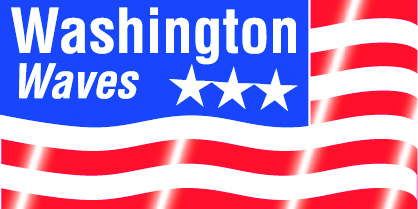Washington, D.C.—Key supporters of the permitting reform provisions included in the bipartisan debt limit and budget package made it clear they are not finished.
“This is a good first step,” Sen. Shelley Moore Capito (R-W.Va.) said of the permitting reform language tucked into H.R. 3746, the Fiscal Responsibility Act.
“By amending the National Environmental Policy Act (NEPA) for the first time since 1982, we will help projects of all types, whether we are talking about a road, a pipeline or a port,” Capito said.
“Simply put, a project shouldn’t take longer to permit than it takes to build.”
The new law:
• modernizes NEPA to make project reviews more efficient and cost less;
• codifies elements of the One Federal Decision to help agencies coordinate reviews, including producing a single environmental document;
• ensures practical review timelines do not exceed two years;
• clarifies what agencies must consider in a NEPA review; and
• permits a project sponsor to assist agencies in conducting environmental reviews to speed up the process.
Capito said the law provides a good jumping-off point for talks on more permitting reform.
President Joe Biden, however, already faces pushback from fellow Democrats who oppose environmental rollbacks and describe the term “permitting reform” as misleading.
Debt Limit Agreement
With less than two days to spare, President Joe Biden signed into law the bipartisan debt limit/budget bill, bringing the U.S. back from the brink of a catastrophic default.
Biden addressed the nation from the Oval Office, emphasizing provisions in H.R. 3746, the Fiscal Responsibility Act, that suspends the debt limit until January 2025, cuts spending and the deficit and accelerates investments in clean energy.
“No one got everything they wanted, but the American people got what they needed,” Biden said.
“We averted an economic crisis, an economic collapse.”
House Speaker Kevin McCarthy (R-Calif.), who led the congressional efforts to reach a deal, stressed $2.1 trillion in savings, “the biggest spending cut in American history,” no new taxes, unspent COVID funds clawed back, work requirements for able-bodied adults with no dependents to qualify for federal assistance and permitting reform.
Following the House’s lead, the Senate gave final congressional approval to the bill by a vote of 63 to 36 with more Democrats supporting it than Republicans.
CG iPhone Management
The Coast Guard warned users of its iPhones or iPads to make sure those devices are enrolled in the enterprise mobile device management (MDM) solution by June 30 to keep from losing cellular service.
In a notice, the Coast Guard said the MDM solution allows its mobile device users to access critical information and systems without sacrificing security.
It added that approximately 2,100 non-compliant devices could lose connectivity on June 30.
Two categories of users are covered by the notice: unmanaged individually assigned IOS devices, which must be enrolled in DOD365 Mobile+ via Microsoft Intune; and unmanaged shared iOS devices, which may change hands on a frequent basis and must be enrolled in the Microsoft Intune MDM as a “Frontline” device.
The notice includes instructions on how to take action.
“The Coast Guard is relying on our members to take quick action, helping us become a more capable force, maintain operational security and be effective stewards of taxpayer funds,” the notice stated.
Questions for the CWMS Team may be submitted to smb-c5isc-ucpl-cwms@uscg.mil.
Voluntary Fairways
The Coast Guard recommended establishing voluntary shipping fairways for coastwise and nearshore vessel traffic to promote safe, unobstructed navigation along the western seaboard of the U.S.
That recommendation grew out of the Pacific Coast Port Access Route Study, which is the first comprehensive evaluation of vessel traffic patterns of the Pacific coastal waters off California, Oregon and Washington.
“The variety and number of waterway users along the Pacific Coast has dramatically increased over the past decade,” said Lt. Liesl Olson, Coast Guard Pacific Area port and waterways specialist.
“In the interest of maintaining navigational safety for all members of the maritime community, the Coast Guard conducted this study. Its fairway recommendations promote safe vessel transits along the coast and connect to major port approaches.”
The Coast Guard stated it considered concerns and recommendations from maritime stakeholders, tribes and members of the public and received more than 22,000 comments.
Results of the study have been published in the Federal Register under docket USCG-2021-0345, which can be found by searching www.regulations.gov.
Additionally, the study will be available at the USCG Navigation Center’s website: www.navcen.uscg.gov/port-access-route-study-reports.
For additional information, contact Lt. Cmdr. Sara Conrad at 510-437-3813 or Sara.E.Conrad@uscg.mil.




